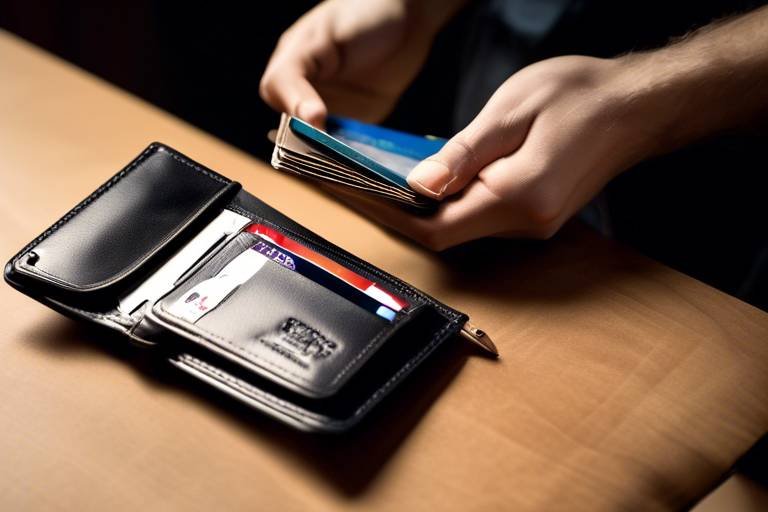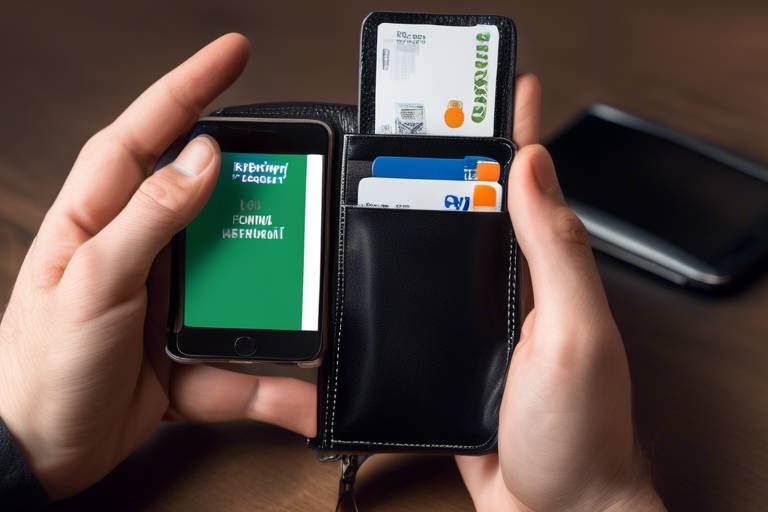The Benefits of Using an Exchange for Crypto Staking
In the ever-evolving world of cryptocurrency, staking has emerged as a popular method for investors to earn passive income. But why should you consider using an exchange for your staking activities? This article explores the myriad advantages of utilizing exchanges for crypto staking, focusing on factors like ease of use, security, and the potential for lucrative returns. By the end, you’ll have a clearer understanding of how staking through exchanges can enhance your investment strategy and help you navigate the complex cryptocurrency landscape.
Before diving into the benefits of exchange-based staking, it's essential to grasp the fundamentals of crypto staking itself. At its core, crypto staking is the process of participating in transaction validation on a blockchain network by locking up a specific amount of cryptocurrency. This locked amount not only supports the network but also rewards the staker with additional tokens, akin to earning interest on a savings account. The significance of staking in the crypto ecosystem cannot be overstated; it helps maintain network security and integrity while offering investors a way to grow their holdings.
Now that we understand what staking is, let’s delve into why many investors prefer to stake through exchanges. Using exchanges for staking offers several key benefits:
One of the most compelling reasons to use an exchange for staking is the ease of access. Many exchanges provide a user-friendly interface that simplifies the staking process, making it accessible even to novice investors. With just a few clicks, you can stake your assets without having to navigate the technical complexities usually associated with blockchain technology. Imagine walking into a restaurant and having the menu options clearly laid out for you—this is what exchange platforms offer to the world of crypto staking.
Another significant advantage is the reduction in technical knowledge required to participate in staking. Traditional staking often demands a deep understanding of blockchain mechanics, which can be intimidating for newcomers. However, when you stake through an exchange, much of this complexity is handled behind the scenes. This accessibility means that anyone, regardless of their technical background, can dive into the world of staking. It’s like being able to enjoy a gourmet meal without needing to know how to cook it!
Exchanges also provide tools that make it easy to manage your stakes. From tracking rewards to adjusting your stakes, these platforms offer a level of convenience that is hard to beat. You can monitor your investments in real-time and make informed decisions without having to sift through complicated data or perform manual calculations. This convenience is akin to having a personal assistant who keeps everything organized and up-to-date for you.
Security is a major concern for any crypto investor, and exchanges take this aspect seriously. Many reputable exchanges implement robust security measures to protect your staked assets. This includes features like two-factor authentication, cold storage for funds, and regular security audits. Knowing that your assets are safeguarded allows you to stake with confidence. After all, who wants to lose their hard-earned investments due to security vulnerabilities?
Investors are often attracted to staking for the potential rewards it offers. But how does staking on exchanges compare to other investment options? Generally, staking can provide a higher return on investment (ROI) than traditional savings accounts or even some stocks. This makes it an appealing option for those looking to grow their wealth over time.
It’s important to note that different cryptocurrencies offer varying staking rewards. For example, staking Ethereum might yield different returns compared to staking Cardano. When choosing an exchange, it’s wise to compare the rewards available across various platforms. This can help you identify the most lucrative options tailored to your investment strategy.
Investors can choose between long-term and short-term staking strategies. Long-term staking typically involves locking up your assets for an extended period, often yielding higher rewards. On the other hand, short-term staking allows for more flexibility but may come with lower returns. Each approach has its implications on potential returns and risk, so it’s crucial to consider your financial goals before diving in.
While there are numerous benefits, it’s essential to acknowledge that risks also exist in exchange staking. Potential downsides may include exchange hacks, regulatory changes, or fluctuations in token value. Understanding these risks will help you make informed decisions and better navigate the staking landscape.
- What is crypto staking? - Crypto staking is the process of locking up cryptocurrency to support blockchain operations and earn rewards.
- Is staking safe? - While exchanges implement security measures, there are inherent risks. Always choose reputable exchanges and understand the risks involved.
- Can I lose money in staking? - Yes, the value of staked tokens can fluctuate, and there’s a risk of loss, particularly in volatile markets.
- How do I choose an exchange for staking? - Look for user-friendly interfaces, security features, and competitive staking rewards when selecting an exchange.

Understanding Crypto Staking
Crypto staking is an intriguing concept that has gained significant traction within the cryptocurrency community. At its core, staking involves locking up a certain amount of cryptocurrency to participate in the validation of transactions on a blockchain network. This process is akin to earning interest on a savings account, where your funds are utilized to help maintain the integrity and security of the network, and in return, you receive rewards. It’s a win-win situation that not only supports the network but also allows investors to earn passive income.
To fully grasp the importance of staking, it's essential to understand its role in the crypto ecosystem. Unlike traditional mining, which requires substantial computational power and energy consumption, staking is a more eco-friendly alternative. It operates on a Proof of Stake (PoS) mechanism, where validators are chosen based on the amount of cryptocurrency they hold and are willing to "stake." This not only democratizes the process but also enhances the overall efficiency of the blockchain.
Here are some key points about crypto staking that highlight its significance:
- Support Network Security: By staking, you contribute to the security of the blockchain, making it more resilient against attacks.
- Earn Rewards: Stakers earn rewards in the form of additional cryptocurrency, providing an incentive to participate.
- Lower Entry Barriers: Many exchanges simplify the staking process, allowing even newcomers to engage without extensive technical knowledge.
Moreover, the rewards from staking can vary significantly depending on the cryptocurrency and the exchange used. Some cryptocurrencies offer attractive interest rates that can significantly boost your holdings over time. This potential for high returns, coupled with the relatively low effort required, makes staking an appealing option for many investors. However, it’s crucial to remember that, like any investment, staking comes with its own set of risks, which we will explore in later sections.
In summary, understanding crypto staking is essential for anyone looking to navigate the evolving landscape of digital currencies. It not only offers a way to earn passive income but also plays a vital role in maintaining the health and security of blockchain networks. As you delve deeper into the world of cryptocurrency, consider how staking can fit into your investment strategy, and always stay informed about the risks and rewards associated with it.
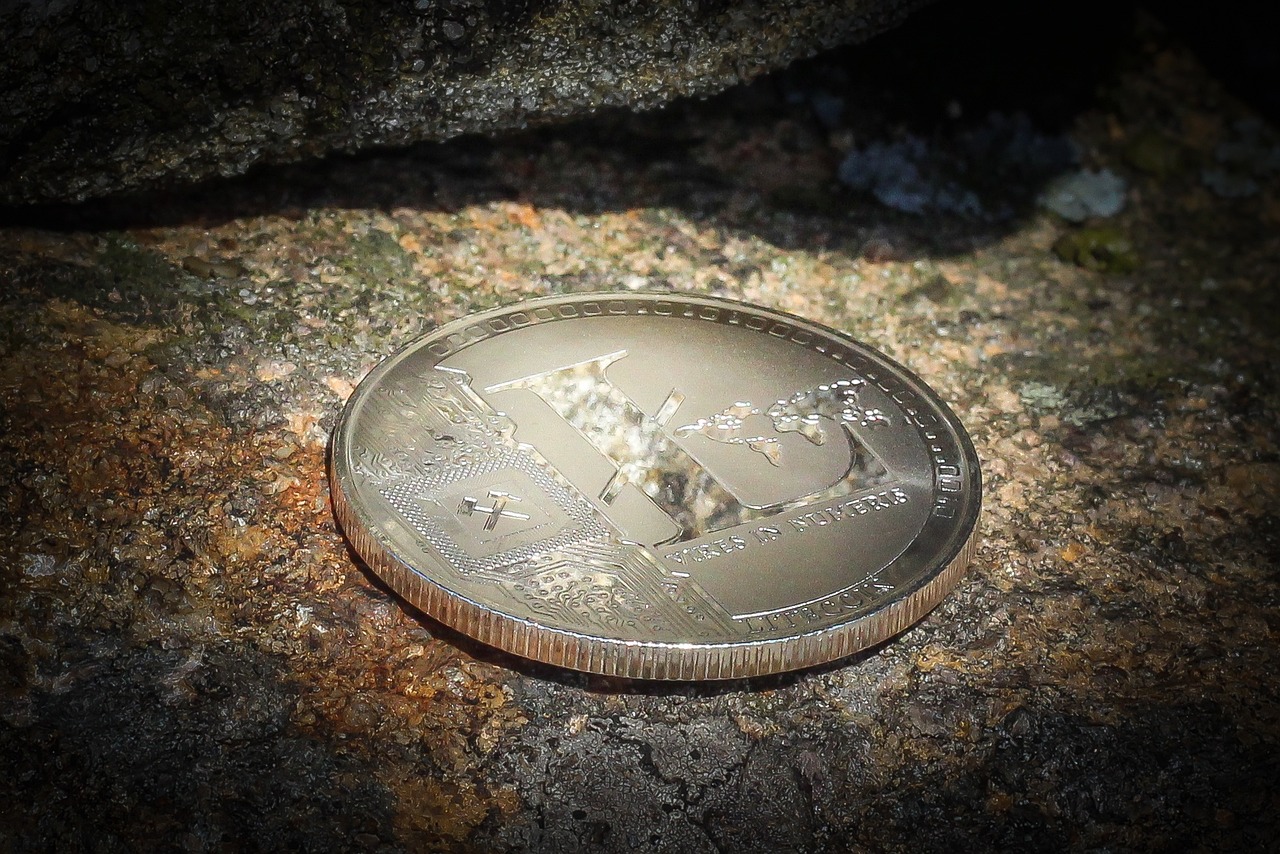
Advantages of Exchange-Based Staking
When it comes to crypto staking, many investors are turning to exchanges for a variety of compelling reasons. The world of cryptocurrencies can be daunting, especially for newcomers, but utilizing an exchange for staking simplifies the entire process. Imagine walking into a high-tech store, where every gadget is labeled with clear instructions; that’s what exchanges do for staking! They provide a user-friendly interface that demystifies the complexities of blockchain technology, making it accessible for everyone, regardless of their experience level.
One of the primary advantages of exchange-based staking is the ease of access. Most exchanges are designed with the end-user in mind, offering intuitive dashboards that guide users through the staking process. You don’t need to be a tech whiz or an expert in cryptocurrency to start earning rewards. Simply create an account, deposit your crypto, and the exchange takes care of the heavy lifting. This is particularly beneficial for those who may feel overwhelmed by the technical jargon often associated with staking.
Moreover, staking through exchanges significantly reduces the technical knowledge required. Traditionally, staking involved setting up a node, managing wallets, and understanding the intricacies of blockchain mechanics. With exchanges, this complexity is streamlined. They handle the backend processes, allowing users to focus on what truly matters: earning rewards. This accessibility is a game-changer, as it opens the doors for a larger audience to participate in the staking ecosystem.
Another noteworthy benefit is the convenience of management. Many exchanges provide built-in tools that allow users to easily track their staking rewards and adjust their stakes as needed. For instance, if you want to increase your stake or withdraw your rewards, you can do so with just a few clicks. Imagine trying to juggle multiple wallets and nodes; it can quickly become overwhelming. With exchanges, everything is consolidated in one place, making it much easier to manage your investments.
Security is also a significant factor when considering where to stake your crypto. Leading exchanges implement robust security features to protect staked assets, including two-factor authentication, cold storage for funds, and regular security audits. This level of protection helps instill confidence in users, knowing their assets are safe from potential threats. After all, would you trust your hard-earned money with a platform that doesn’t prioritize security? The answer is likely no!
In summary, the advantages of using exchanges for crypto staking are clear. They provide a simplified process that is accessible to everyone, reduce the need for extensive technical knowledge, and offer convenient management tools, all while ensuring robust security measures. For many investors, these benefits make exchanges the preferred choice for staking their cryptocurrencies.

Ease of Access
When it comes to the world of cryptocurrency, accessibility is key, especially for newcomers who might feel overwhelmed by the technical jargon and complex processes often associated with blockchain technology. This is where exchanges shine. They provide a user-friendly interface that makes it incredibly easy for anyone, regardless of their technical background, to get started with crypto staking. No more diving into dense manuals or spending hours trying to understand how to lock up your assets. With just a few clicks, you can stake your coins and start earning rewards.
Imagine walking into a high-tech store filled with gadgets, but instead of being bombarded with confusion, you find a friendly staff member ready to guide you through your options. That’s what exchanges do for staking! They simplify the entire process, allowing you to focus on what truly matters—growing your investment. You can think of it as having a personal assistant who handles the nitty-gritty details, while you enjoy the benefits of staking.
Moreover, exchanges often provide educational resources, tutorials, and customer support that help demystify the staking process. This is crucial for those who might be hesitant to jump into the crypto space. With these resources at your fingertips, you can learn at your own pace and feel confident in your decisions. It’s like having a safety net that catches you when you stumble, making the leap into crypto less daunting.
In addition, many exchanges offer mobile applications, allowing you to manage your staking investments on the go. Whether you’re commuting to work or lounging at home, you can easily check your rewards, adjust your stakes, and stay updated on market trends. This level of convenience is a game-changer for investors who value flexibility. Just picture yourself sipping coffee at your favorite café, effortlessly managing your crypto portfolio from your smartphone.
To summarize, the ease of access provided by exchanges is a significant advantage for anyone looking to participate in crypto staking. With intuitive interfaces, educational resources, and mobile management options, exchanges lower the barriers to entry and empower more people to take part in the exciting world of cryptocurrency. So, if you’ve been thinking about staking but felt intimidated by the complexities, rest assured that exchanges are here to make your journey smooth and enjoyable.
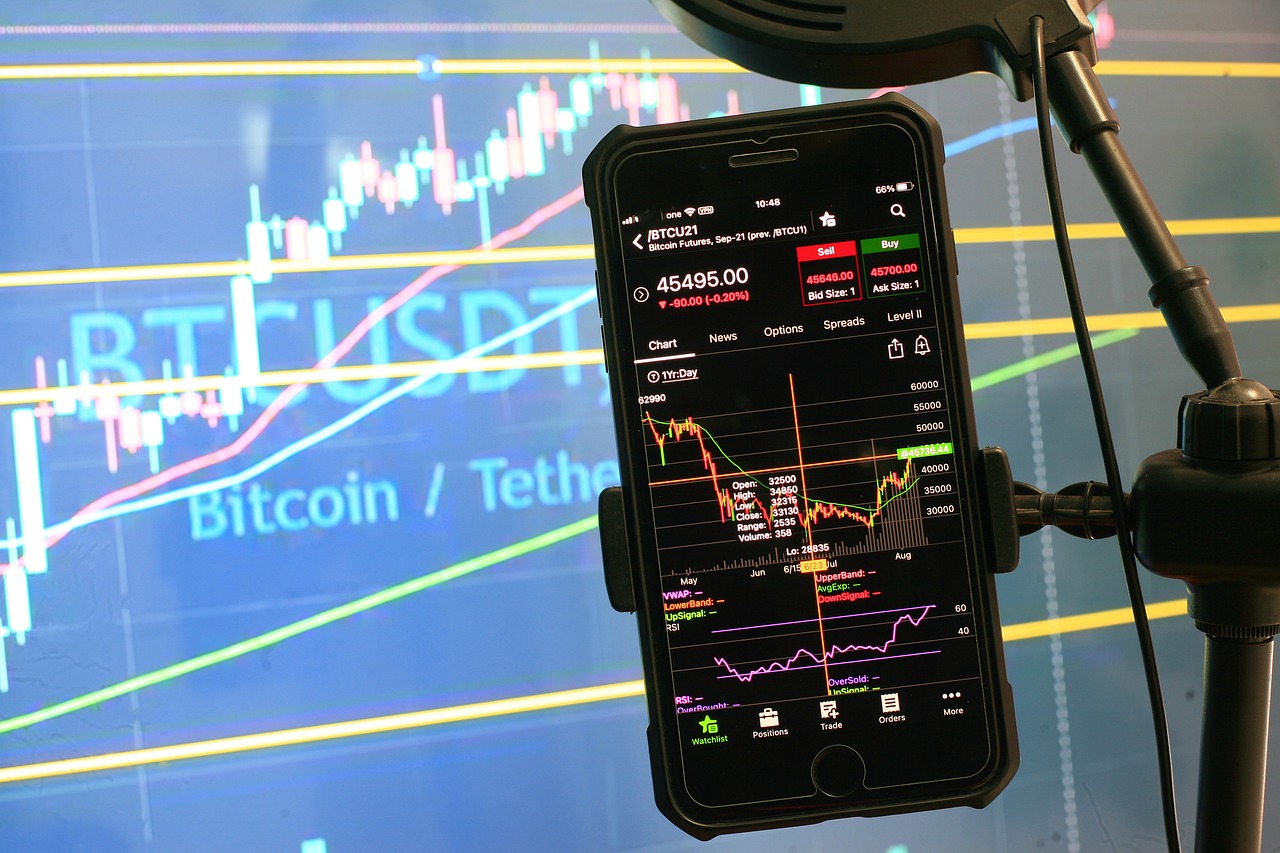
Reduced Technical Knowledge Required
One of the most significant barriers for many potential investors in the cryptocurrency space is the steep learning curve associated with understanding blockchain technology and the mechanics of staking. However, when you choose to stake through an exchange, this barrier is dramatically lowered. You don’t need to be a tech wizard to get involved; in fact, many exchanges have designed their platforms with the average user in mind. Imagine walking into a complex science lab and finding everything simplified, with clear instructions and friendly staff ready to help you. That’s the experience exchanges aim to create for their users.
Exchanges typically handle the intricate technical details behind the scenes. For instance, they manage the node operations, ensure your funds are staked correctly, and even handle the complexities of blockchain interactions. This means you can focus on the more enjoyable aspects of investing, like monitoring your rewards and making strategic decisions, rather than getting bogged down in the nitty-gritty of how staking works. Think of it as having a personal trainer at the gym who not only shows you how to use the equipment but also designs a workout plan tailored to your goals.
Furthermore, many exchanges offer educational resources and customer support to help users understand the staking process better. This can include tutorials, FAQs, and even live chat support. For those who might still feel uncertain, these resources provide reassurance and guidance, making the staking process feel less daunting. To illustrate, here’s a quick comparison of the support features offered by some popular exchanges:
| Exchange | Customer Support | Educational Resources |
|---|---|---|
| Exchange A | 24/7 Live Chat | Tutorial Videos, Articles |
| Exchange B | Email Support | Webinars, Guides |
| Exchange C | Community Forum | FAQs, Blog Posts |
In summary, the reduced technical knowledge required when staking through exchanges not only opens the door for more investors to participate but also enhances the overall user experience. By simplifying the process and providing ample support, exchanges empower individuals to take part in the crypto revolution without the fear of getting lost in the technical jargon. This encourages wider adoption and fosters a more inclusive environment in the world of cryptocurrency.
- What is crypto staking? Crypto staking involves locking up a certain amount of cryptocurrency to participate in transaction validation on a blockchain.
- Do I need technical knowledge to stake on an exchange? No, staking on an exchange is designed to be user-friendly, requiring minimal technical knowledge.
- Are my staked assets safe on an exchange? Most reputable exchanges implement robust security measures to protect your assets, but it's always wise to do your own research.
- How can I track my staking rewards? Exchanges typically provide tools and dashboards that allow you to easily track your rewards and manage your stakes.

Convenience of Management
When it comes to managing your crypto investments, convenience is key. Using exchanges for staking provides a seamless experience that can make a world of difference for both seasoned investors and newcomers alike. Imagine trying to juggle multiple wallets, each with its own set of rules and interfaces. It can be overwhelming, right? Well, exchanges simplify this entire process by consolidating everything into one user-friendly platform. You can track your staked assets, rewards, and even make adjustments all in one place, which is a game changer in the fast-paced world of cryptocurrency.
One of the standout features of exchange-based staking is the intuitive dashboard that many platforms offer. This dashboard typically displays all your staked assets, their current value, and the rewards you've accrued over time. Instead of logging into different wallets or platforms, you can see everything at a glance, making it incredibly easy to manage your investments. This level of transparency not only saves time but also helps you stay informed about your portfolio's performance.
Moreover, many exchanges provide automated tools that allow you to set specific parameters for your staking activities. For instance, you can choose to automatically reinvest your rewards, which can significantly enhance your overall returns without requiring constant oversight. This feature is particularly beneficial for those who prefer a more hands-off approach to investing. Just set it and forget it, knowing that your assets are working for you.
Another aspect to consider is the customer support provided by exchanges. Should you encounter any issues or have questions about your staking process, most reputable exchanges offer robust customer service options. Whether it’s through live chat, email, or even community forums, help is often just a click away. This level of support can be incredibly reassuring, especially for those who may not feel entirely confident navigating the complexities of the crypto space.
To further illustrate the convenience of management, let’s take a look at a comparative table of features offered by popular exchanges:
| Exchange | User-Friendly Dashboard | Automated Reinvestment | Customer Support |
|---|---|---|---|
| Exchange A | Yes | Yes | 24/7 Live Chat |
| Exchange B | Yes | No | Email Support |
| Exchange C | No | Yes | Community Forum |
As you can see, the features may vary, but the key takeaway is that most exchanges prioritize user experience, making it easier than ever to manage your staked assets. In a world where every second counts, having a streamlined management process can not only save time but also enhance your overall investment strategy.
In conclusion, the convenience of management that exchanges provide is a significant advantage for anyone looking to dive into the world of crypto staking. With a user-friendly interface, automated tools, and reliable customer support, you can focus more on growing your investment rather than getting bogged down by the technicalities.
- What is crypto staking? Crypto staking is the process of locking up a certain amount of cryptocurrency to participate in transaction validation on a blockchain.
- Why should I use an exchange for staking? Exchanges simplify the staking process by providing user-friendly interfaces, automated tools, and customer support, making it accessible for everyone.
- Are there risks associated with exchange staking? Yes, while there are many benefits, risks such as platform security and market volatility should be considered.
- Can I track my staking rewards easily? Yes, most exchanges offer dashboards that allow you to track your staked assets and rewards in real-time.

Security Features
When it comes to investing your hard-earned money in cryptocurrencies, security is paramount. Staking your crypto through exchanges can be a double-edged sword; while it offers convenience, it also raises concerns about the safety of your assets. Fortunately, reputable exchanges implement a variety of robust security measures designed to protect your staked assets and ensure that you can invest with confidence.
One of the most significant features is the use of cold storage. This means that most of the cryptocurrencies held by the exchange are stored offline, making them less vulnerable to hacking attempts. By keeping the majority of funds in cold storage, exchanges can mitigate risks associated with online threats. For instance, if a hacker were to breach the exchange's online systems, they would only have access to a small fraction of the total assets.
Moreover, many exchanges employ multi-factor authentication (MFA) to add an extra layer of security. This process requires users to verify their identity through multiple methods before they can access their accounts. It’s like having a lock on your door and a security system in your home—one layer alone isn't enough. With MFA, even if someone manages to obtain your password, they would still need the second form of verification to gain access to your account.
Another essential aspect of security is the implementation of encryption technologies. These technologies help protect your personal information and transaction data from being intercepted by malicious actors. Think of encryption as a secret code that only you and the exchange can understand, making it extremely difficult for anyone else to decipher your information.
Additionally, many exchanges provide insurance policies for their users. This means that in the unlikely event of a security breach, the exchange may cover losses up to a certain limit, giving investors peace of mind. However, it’s important to read the fine print, as not all exchanges offer the same level of coverage.
In summary, while staking through exchanges can expose you to certain risks, the security features they implement—such as cold storage, multi-factor authentication, encryption technologies, and insurance policies—help to create a safer environment for your investments. By choosing a reputable exchange that prioritizes security, you can enjoy the benefits of staking without the constant worry of losing your assets.
- What is crypto staking?
Crypto staking involves locking up a certain amount of cryptocurrency to participate in transaction validation on a blockchain, earning rewards in the process.
- Is staking safe on exchanges?
While there are risks, reputable exchanges implement strong security measures to protect your assets, such as cold storage and multi-factor authentication.
- Can I lose my staked assets?
Yes, there are risks involved, including market volatility and potential security breaches, but proper research and choosing secure exchanges can mitigate these risks.
- What are the rewards for staking?
Rewards can vary significantly depending on the cryptocurrency and the exchange, with some offering higher returns than others.
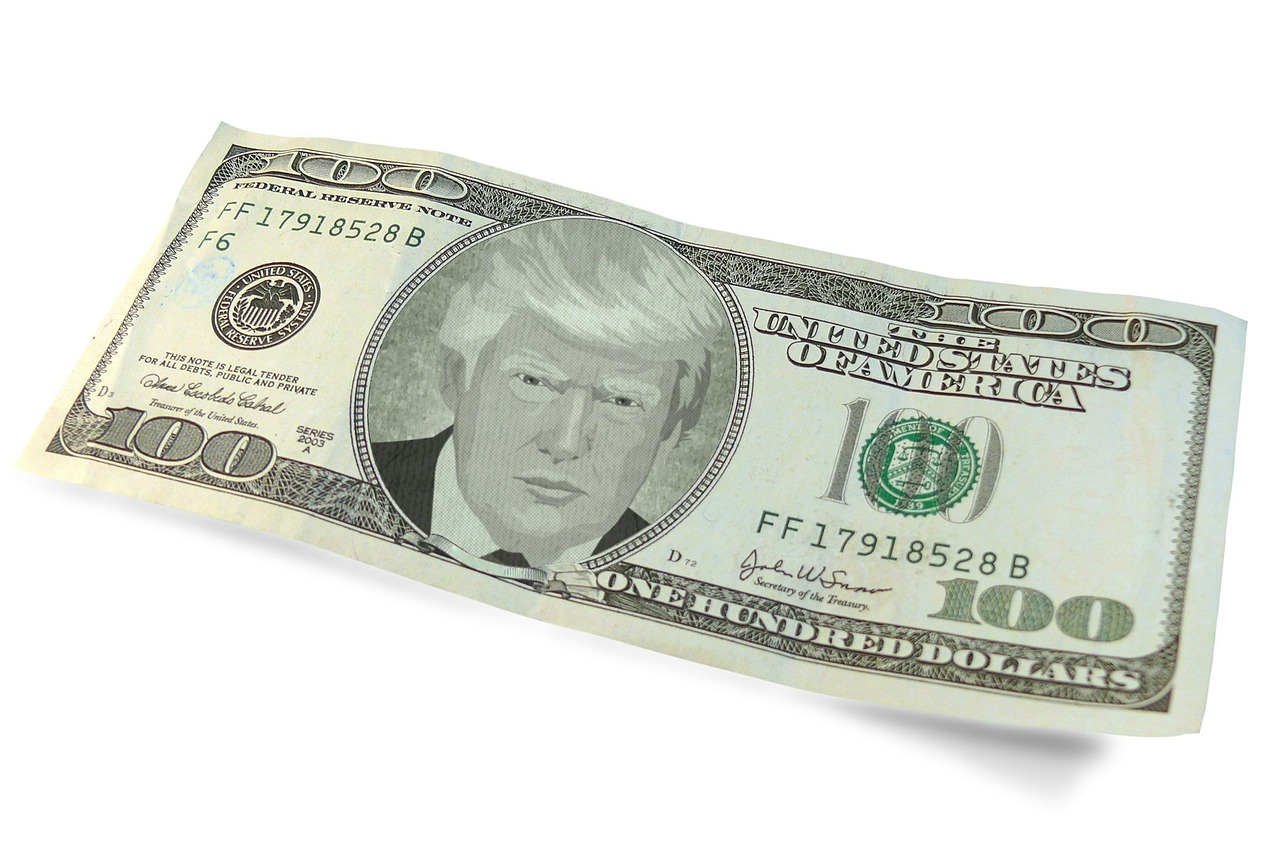
Potential Returns on Staking
When it comes to investing in cryptocurrency, one of the most enticing aspects is the potential for returns, and staking is no exception. Staking allows investors to earn rewards simply by holding their cryptocurrency in a compatible wallet or platform. But how do these returns stack up against other investment options? Let's dive into the nitty-gritty of staking rewards and see what you can expect.
Staking can be compared to earning interest on a savings account, but with potentially much higher returns. While traditional savings accounts might offer a meager 0.01% to 2% interest rate, staking rewards can vary significantly based on the cryptocurrency and the platform used. For example, some cryptocurrencies may offer staking rewards ranging from 5% to 20% annually, and in some cases, even higher!
To give you a clearer picture, here’s a
| Cryptocurrency | Annual Staking Reward (%) | Platform Example |
|---|---|---|
| Ethereum 2.0 | 5% - 7% | Binance, Kraken |
| Cardano | 4% - 6% | Binance, Coinbase |
| Polkadot | 10% - 15% | Kraken, KuCoin |
| Tezos | 5% - 6% | Coinbase, Binance |
As you can see from the table, different cryptocurrencies offer varying rewards, and the choice of platform can also influence your returns. It's crucial to do your research and compare the options available to ensure you’re getting the best bang for your buck.
Now, let’s talk strategy. Investors can choose between long-term and short-term staking. Long-term staking generally involves locking up your assets for a longer period, which can lead to higher cumulative rewards. It’s like planting a tree and waiting for it to grow; the longer you wait, the more fruit it bears. On the other hand, short-term staking can provide quicker returns but may come with higher risks and lower overall rewards. This approach is akin to picking fruit before it’s fully ripe—rewarding but not as fulfilling in the long run.
In conclusion, the potential returns on staking can be significantly lucrative compared to traditional investment methods. However, it’s essential to weigh the risks involved and choose a strategy that aligns with your financial goals. Remember, just like any investment, the crypto market is volatile, and returns can fluctuate based on market conditions.
- What is the average return on staking? The average return can vary widely but typically ranges from 5% to 20% annually, depending on the cryptocurrency and platform.
- Is staking safe? While staking can be safer than trading, it still carries risks. Ensure that you use reputable exchanges and understand the terms of staking.
- Can I lose my staked assets? Yes, there are risks involved, including market volatility and platform security issues. Always do your research and consider the risks before staking.

Comparing Staking Rewards
When it comes to staking cryptocurrencies, one of the most enticing aspects is the range of rewards available. Different cryptocurrencies and exchanges offer varying staking rewards, which can significantly influence your investment decisions. So, how do you compare these rewards effectively? Let's dive into the factors that matter!
First off, it’s essential to understand that staking rewards are not uniform across the board. They depend on several factors, including the specific cryptocurrency, the exchange policies, and even the duration of your staking commitment. For instance, some cryptocurrencies may offer higher annual percentage yields (APY) to attract more stakers, while others might provide lower but more stable returns. This variability can be likened to choosing between a high-risk, high-reward stock versus a more stable bond; the potential gains often come with different levels of risk.
To illustrate this, let’s take a look at a comparison of staking rewards from several popular cryptocurrencies across different exchanges:
| Cryptocurrency | Exchange | Annual Percentage Yield (APY) |
|---|---|---|
| Ethereum (ETH) | Exchange A | 5% |
| Cardano (ADA) | Exchange B | 4.5% |
| Polkadot (DOT) | Exchange C | 10% |
| Tezos (XTZ) | Exchange D | 6% |
As you can see from the table, Polkadot stands out with the highest APY at 10%, which might catch the eye of aggressive investors looking for maximum returns. However, it’s crucial to consider factors beyond just the numbers. For example, the stability of the cryptocurrency, the reputation of the exchange, and the associated risks can all play vital roles in your decision-making process.
Moreover, some exchanges offer additional incentives for staking, such as bonus rewards for larger stakes or loyalty programs that increase your APY over time. These perks can significantly enhance your overall returns, making it essential to read the fine print and understand each exchange's terms and conditions.
Another aspect to consider is the lock-up period. Some staking options require you to lock your funds for a specific period, which can affect your liquidity. If you anticipate needing access to your funds soon, it might be wise to opt for staking options with shorter lock-up periods, even if they offer slightly lower rewards.
In conclusion, comparing staking rewards isn't just about finding the highest APY; it’s about understanding the complete picture. Look at the cryptocurrency's stability, the exchange's reliability, any additional incentives, and the lock-up terms. By weighing these factors, you can make a more informed decision that aligns with your financial goals.
- What is the best cryptocurrency for staking? The best cryptocurrency for staking can vary based on your investment strategy, risk tolerance, and market conditions. Popular options include Ethereum, Cardano, and Polkadot.
- Are staking rewards guaranteed? No, staking rewards are not guaranteed and can fluctuate based on market conditions and the specific cryptocurrency's performance.
- Can I lose money by staking? Yes, while staking can provide rewards, there is also a risk of losing money due to market volatility or changes in the staking protocol.

Long-Term vs. Short-Term Staking
When it comes to staking your cryptocurrencies, one of the most critical decisions you'll face is whether to opt for long-term or short-term staking. Each approach has its unique set of advantages and disadvantages that can significantly impact your investment strategy. So, how do you decide which one is right for you? Let's break it down.
Long-term staking typically involves locking up your assets for an extended period, often ranging from several months to years. This strategy can be likened to planting a tree; it requires patience and nurturing, but the rewards can be substantial as the tree grows. With long-term staking, investors often benefit from higher annual percentage yields (APYs) because they are committing their funds for a longer duration. Additionally, many cryptocurrencies experience price appreciation over time, which can amplify your returns. However, the downside is that your funds are less liquid, meaning you won't be able to access them readily if market conditions change or if you need cash quickly.
On the other hand, short-term staking is akin to a sprint; it’s fast-paced and allows for quick returns. This strategy generally involves staking for shorter time frames, such as weeks or months. The advantage here is flexibility; you can quickly adjust your staking position based on market trends or personal financial needs. Short-term stakers might not enjoy the same level of rewards as long-term stakers, but they can capitalize on market volatility and take advantage of price swings. However, this approach can also be riskier, as it exposes you to the potential downside of sudden market declines.
To give you a clearer picture, here’s a comparison table summarizing the key differences between long-term and short-term staking:
| Criteria | Long-Term Staking | Short-Term Staking |
|---|---|---|
| Duration | Several months to years | Weeks to months |
| Potential Rewards | Higher APYs | Lower APYs, but frequent opportunities |
| Liquidity | Lower liquidity | Higher liquidity |
| Risk Level | Generally lower risk | Higher risk due to market volatility |
Ultimately, the choice between long-term and short-term staking depends on your personal financial goals, risk tolerance, and market outlook. Are you in it for the long haul, willing to weather the storms for potentially higher rewards? Or do you prefer the agility of short-term staking, capitalizing on quick market movements? Understanding your investment philosophy is crucial to making the right decision.
In conclusion, both long-term and short-term staking have their merits and can fit into a well-rounded investment strategy. Whether you decide to stake your assets for the long run or opt for a more flexible approach, being informed about the implications of each method will help you navigate the dynamic world of cryptocurrency staking.
- What is the minimum amount required for staking? - The minimum amount varies by platform and cryptocurrency. Always check the specific requirements before staking.
- Can I unstake my assets at any time? - Unstaking policies differ between exchanges and cryptocurrencies. Some may have lock-up periods, while others allow immediate access.
- Are staking rewards guaranteed? - No, staking rewards can fluctuate based on network performance and the specific cryptocurrency's market conditions.

Risks Associated with Exchange Staking
While the allure of crypto staking through exchanges can be enticing, it's crucial to recognize that there are inherent risks involved. Just like diving into the deep end of a pool, staking can be thrilling, but it also comes with potential dangers that you should be aware of before taking the plunge. One of the primary concerns is the centralization of control. When you stake through an exchange, you're essentially placing your trust in a centralized entity to manage your assets. This means that if the exchange faces technical issues, regulatory scrutiny, or even a security breach, your staked assets might be at risk.
Another significant risk factor is the market volatility that cryptocurrencies are notorious for. The value of your staked coins can fluctuate wildly, and while you might be earning staking rewards, the underlying asset's value could drop significantly. Imagine planting a tree that promises to bear fruit; if a storm uproots it, your harvest could be lost, and you might be left with nothing but the memory of what could have been.
Moreover, there’s the risk of liquidity constraints. When you stake your assets, they are often locked up for a predetermined period. This means that if a sudden market opportunity arises or an emergency situation demands immediate cash, you might find yourself unable to access your funds. Staking can feel like a double-edged sword; while it can yield rewards, it can also tie up your investments in a way that limits your financial flexibility.
Additionally, it’s essential to consider the regulatory landscape. As governments around the world continue to grapple with how to regulate cryptocurrencies, exchanges may be forced to adapt to new laws and guidelines, which could impact your staking rewards or even the ability to stake altogether. Staying informed about these changes is vital, as they can significantly affect your investment strategy.
Lastly, there’s a potential risk associated with unreliable exchanges. Not all exchanges are created equal; some may lack the necessary security measures or customer support to handle issues that arise. Conducting thorough research before choosing an exchange for staking is paramount. Look for reputable platforms with a solid track record, and always be wary of those that seem too good to be true.
In summary, while staking through exchanges offers a convenient way to earn rewards, it is not without its risks. Understanding these risks is essential for making informed decisions in the ever-evolving world of cryptocurrency. Just like any investment, the key is to balance the potential for rewards with an awareness of the risks involved.
- What is the biggest risk of staking on an exchange? The biggest risk is the potential loss of funds due to exchange hacks or mismanagement.
- Can I access my staked assets at any time? Typically, staked assets are locked for a period, limiting immediate access.
- How can I mitigate risks when staking? Conduct thorough research on exchanges, diversify your staking options, and stay updated on regulatory changes.
Frequently Asked Questions
- What is crypto staking?
Crypto staking is the process of locking up a certain amount of cryptocurrency to participate in transaction validation on a blockchain. It helps secure the network and, in return, stakers earn rewards. Think of it as putting your money in a savings account, but instead of earning interest, you earn crypto!
- Why should I use an exchange for staking?
Using an exchange for staking simplifies the process significantly. Exchanges provide user-friendly interfaces and reduce the technical knowledge required to participate in staking. It’s like having a personal trainer for your crypto journey—guiding you every step of the way!
- Are there any risks associated with staking on exchanges?
Yes, while staking offers potential rewards, there are risks involved. These can include security vulnerabilities, exchange outages, or even changes in staking rewards. Always do your research and consider diversifying your investments to mitigate these risks.
- What kind of returns can I expect from staking?
The returns on staking can vary greatly depending on the cryptocurrency and the exchange you choose. Generally, staking rewards can range from a few percent to over 20% annually. It's like hunting for treasure—some places yield more than others, so it pays to compare!
- Can I stake my crypto for both short-term and long-term?
Absolutely! You can choose between short-term and long-term staking strategies. Short-term staking might offer quicker returns but could be riskier, while long-term staking often provides more stability and higher cumulative rewards. It’s all about what fits your investment style!
- How do I manage my stakes on an exchange?
Most exchanges provide tools to easily manage your stakes, track rewards, and adjust your holdings. It’s as convenient as managing your online banking—everything is at your fingertips, making it easy to keep an eye on your investments!
- Do I need extensive technical knowledge to stake?
Nope! One of the biggest advantages of using an exchange for staking is that it eliminates the need for deep technical knowledge. You can participate in staking without needing to understand the intricate details of blockchain technology. Just dive in and enjoy the ride!



